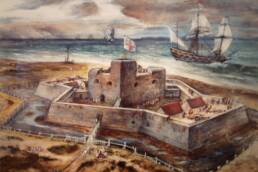Types of websites – a rough classification
The diversity of web sites on the internet is very broad, but can be roughly summarized and simplified into basic 5 types of websites based on their functionality, usability, audience, and intended use. Although a gross oversimplification… helpful for planning purposes. Finding the right combination of these “types” of web sites is useful in the web design phase, and assists with determining the “tone” of interaction (example: learning vs selling, browsing vs reading). Whether you are selling products on line or educating your customers to minimize correspondence, clarifying the genus of the web site before the project is started can clarify the approach, functionality, and aesthetic design of the site.For more information on building your own website please visit my portfolio to browse completed projects a request a proposal for web development services.
Educational:
Education web sites often follow a very simplistic approach to web development. When education a wide audience, once must keep in mind that different people learn in different ways, so a very usable and functional site is instrumental in getting the information across. Educational sites are intended to provide the user with a large amount of information in a very easy to use manner.
Informational sites as quite frequently non-profit web sites, and are based around relaying information rather then selling a product or service. Examples of educational sites are government sites, teaching resources, township web sites, or environmental organizations.
Target audience: Users seeking large amounts of information without the intention of purchasing a product or service
E-Commerce:
E-commerce sites are designed around pitching and selling a product range to users online. Shopping carts, online inventory, administrative systems, and online transactions are all considered when developing e-commerce solutions.
An Internet storefront can provide information about your organization, the services it provides, its history and philosophy, and provides a resource for people interested in doing business with you. This is the most common type of Web site for small-sized and medium-sized businesses. The role of this type of web site is to provide your users with a means of browsing and purchasing your products on line. In addition, sites that are selling a service rather then a product can use e-commerce solutions to make reservations, appointments, or bookings.
Many businesses can benefit greatly from creating a Web site capable of conducting online transactions. For example, the Internet has been great for selling computer hardware and software (30% of Internet users have purchased computer software through the Internet). It has also proven to be quite successful in selling easily shipped items such as books and art, and has taken a major role in the accommodation and tourism industry.
Another major factor in the success of an online business-type Web site is the location of your market. If your potential market extends beyond your local community, you will be able to tap into business opportunities with markets in other cities, provinces/states, and countries.
Target audience: Users seeking to purchase or book a product or service over the internet.
Small Business Websites:
The role of a small business web site is to provide a professional overview of your companies services and branding. The most common of sites on the internet, small business web sites are somewhere between an informational site and a sales pitch. Unlike brochure style web sites a small business web site provides a very thorough overview of the services and products offered.
Quite often elements from an informational web site can be used to enhance the promotional value, search engine placement, and content within the web site. For example a tourism related company should have an image gallery and in depth description of their tours, accommodations, or services. Ecommerce options are limited to e-mail inquiry forms, or reservation forms. Credit card information is relayed either by phone or fax once the inqury has been placed.
A typical sitemap for a small business web site would be broken down into the following pages.
- Home
- About Us
- Services and Products
- service or product 1
- service or product 2
- service or product 3
- service or product 4
- ect….
- Store Location and Office Hours
- Contact Us
Target audience: Customers interested in a companies products or services.
Informational Websites:
The more times a potential client visits your Web site, the more likely they will be to do business with you in the future. The best way to keep potential clients coming back – and to provide an added service for your existing clients – is to make your Web site an informational resource. As well, this type of Web site enables your business to showcase its expertise and gain respect for being knowledgeable in your business or profession.
Examples of sections in an informational site would include:
- Frequently Asked Question section
- Image Galleries
- A guide to consumer decision-making
- In depth review of the products and services
- A well-maintained link page to other information resources
- Articles of interest on related topics
- A site wide search function
- An in-depth customer support section
- Regular newsletter
Resources such as these will increase the value of your Web site and raise the profile of your organization.
The role of this type of Web site is as an indirect marketing tool. Visitors to your Web site who would benefit from it are potential clients who wish to learn more before doing business with you, and existing clients who will “drop in” to learn the latest about your business or services.
Developing content is the key to a useful website, informational web sites are almost always the ideal choice for a high search engine ranking. Sections such as articles of interest act as promotional content pages. And with proper keyword research an informational style approach to site development can be applied to both e-commerce, brochure, and educational sites.
Target audience: Users seeking large amounts of information without the intention of purchasing a product or service
Online Brochure:
A site which provides a very brief overview of the company and services. Often a band aid solution while larger sites are being developed, brochure style web sites take a quick glance at the companies location, services, and contact information.
Brochure-style Web sites are characteristically one or two pages long and are a carryover of traditional methods of print advertising. This method of advertising, while very effective in high-distribution print publications, has not carried over very well to the Web. In most cases, businesses should opt for a small business or informational web site.
Target audience: Customers interested in a companies products or services.




